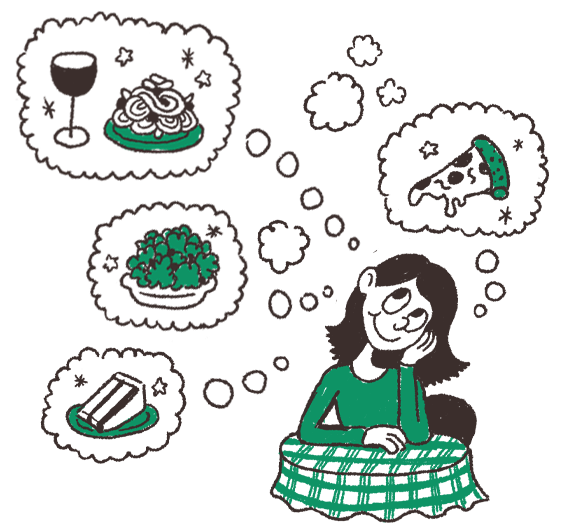What and how Adelaide will eat and drink in 2023.
Eat the future
There was once a time in Adelaide when food trucks seemed revolutionary. Everywhere you turned there was a cooker on four wheels pumping out takeaway, served up in a cardboard box with flimsy cutlery on the side.
The flavour-on-wheels trend revved its engine around the same time as smashed avocado, Instagram-worthy restaurant dishes and matcha were all in their heyday. Maybe you’re a little older and recall the days when quiche was ground-breaking (thanks, Julia Child), or when everyone began arriving at your house with wine coolers.
Food trends come and go like weather or bloat, but the art of predicting what flavours will be fashionable in the year ahead will always live on. As the New Year draws near, chefs, restaurateurs and Instagram wonks are again dabbling in the dark art of food forecasting.
Many predictions about what Adelaide diners will be eating in 2023 tell a simple story: cash-strapped diners want locally sourced produce but also feel the urge to splash what cash they do have on fine dining now and again.
“This is probably going to be the biggest year for hospitality venues in terms of revenue, with people being out and about, being the first year without COVID-19 restrictions,” Jake Kellie, head chef of Norwood’s open-flame restaurant Arkhé, says.
“However, with interest rates going up alongside the cost of living, I think there might be a little bit of a dip in terms of people being a little more conservative about dining out because they are watching their back pocket.”
With this in mind, we’ve gathered some predictions from restaurateurs, critics and those in the hospitality game about what may catch fire in 2023.
Fine dining

After decades of being sidelined for smart-casual dining, fine dining is coming back, says Jake Kellie of Arkhé. He says the transformed Restaurant Botanic, which reopened with countless five-star reviews and awards, will spur a revival of silver-service dining.
The restaurant, headed up by chef Justin James, opened last year and draws on its surroundings to create its two set menus. “With Botanic getting Restaurant of the Year, there’s a slight inclining that there’s still room for that vibe,” Jake says. “What Botanic has done is flown that flag. I personally haven’t done it for a while, but I can see a lot of restaurants opening with that fine dining aspect.”

The downfall of kingfish sashimi (we hope)

Kingfish sashimi. Much like the scheming Seinfeld character Newman, the dish shows up everywhere you turn, whether you’ve asked for it or not. “Hopefully, one trend is people stop putting kingfish on the menu,” Restaurant Botanic’s Justin James says.
He says restaurants that serve it operate under a false belief it’s what the diner wants. “There so much other fish out there that you can use to serve raw or lightly cured or lightly smoked that could have worked really well on there,” Justin says. “It’s really down to a lack of creativity and restaurants not wanting to take a risk.”
Non-alcoholic beverages

Sober drinkers are a growing market, with forecasters predicting up to 30 per cent of drinkers will look for non-alcoholic options. Whether it’s a glass of NON or a Bridge Road Free Time, the trend of no-hangover drinking will continue into 2023.
“With dedicated booze-free bottle shops opening up across the country, even one recently in Adelaide, we are seeing consumers more conscious of their alcohol consumption, and its effects on their physical and mental health,” says Michael Ingham, brand ambassador for Delinquente Wine Co.
Making memories

The appetite for one-off food and drink experiences will get stronger in the new year, says freelance food and drink writer Katie Spain. She says diners want to make memories, especially after lockdowns.
Katie points to Villetta Porcini, an intimate dining experience at Mylor set amongst butterflies and eight hectares of forest, as an example. The Mycelium Lunch draws on the mushroom season in the Hills.
“This is near impossible to get in to,” Katie says. “Tickets are coveted and the booking system offers a nominated date and guests are asked to pre-purchase tickets once released. It’s beautifully done.”
Sauvignon Blanc

Whether it’s Michael Keaton’s film career or meatloaf (the dish, not the late singer), everyone loves a comeback story. In 2023, The Fruitful Pursuit’s Tyler Grace Austin says Sauvignon Blanc will have its moment.
“I know what you’re thinking, but hear me out,” she says. “We’ve been conditioned to distrust this versatile gem. We can probably thank our favourite aunt (and all her friends) for this. With our rapidly broadening appreciation for farming integrity, more developed and nuanced styles are already redefining its unfortunate reputation.”
Tyler says drinkers have overlooked the wine’s texture and spectrum of riper characteristics. “This variety lends itself well to a bit of time on skins, with surprising characters of peach, pear and chamomile developed with a careful eye,” she says. “Savvy’s always been the wild one. It just needs more love to let it shine.”
Takeaway

Australians’ spending on takeaway blew out to almost $3 billion in 2020, with 5.5 million people using an app to order dinner. Gazing into the culinary crystal ball, Jake Kellie of Arkhé sees more places like Africola Canteen opening, the inner-suburban offshoot of the city restaurant. The small, casual salad-focussed eatery opened in Norwood in September.
“More people want something quick and easy because they are still working from home,” Jakes says. “Even places like Stanley’s (in Brisbane) started using Deliveroo, which is something they haven’t done before, because people are home so much all the time on the back of COVID-19.”
Playful cocktails

Pulling up a stool at your favourite bar and ordering a cocktail is the perfect antidote to the end of a working week. Pink Moon Saloon and Clever Little Tailor co-owner Marshall King says not only do people want to unwind, they want a sense of fun and performance, too.
“I think that everything in the bar holistically contributes to that, and the bars that are doing that really well at the moment have a really good understanding of that sense of fun,” he says. “It doesn’t have to be blowing bubbles around, but the idea that when you enter a space, the drinks are excellent, but they are also just a prop in the human performance element of it all.”
Australian-made drinks

A renewed domestic focus is driving an interest in locally made small-batch spirits. A report by the Australian Distillers Association found the value of Australian-made spirits increased to $361 million to June 2019 – a 61 per cent increase on the previous year. Marshall King of Pink Moon Saloon says drinkers and bar owners are preferencing local options over well-known favourites.
“We are seeing more quality and more choice, and I really like that because you can see that support for Australian spirits can be driven by a support because of their quality, not just because they are local,” he says. “Why would you ship Tanqueray halfway across the world when you’ve got something nice on your own doorstep? I think that’s very exciting.”
Waste not, want not

Consumer appreciation for sustainability is seeing increasing demand for bulk-supply spirits, which cut down on packaging. Delinquente’s Michael Ingham says he also expects a push for bars and restaurants to compost to reduce their footprint.
“We are finding an increasing demand for bulk-supply spirits, such as 20 litre drums, and things like ecoSPIRITS – a closed-loop distribution system similar to beer kegs,” Michael says. “Small bars and restaurants are moving towards large-scale batching, negating the need for glass bottles, screw caps and labels, and reducing their carbon footprint.”
Locally sourced seafood

Mussels and farmed abalone will be the heroes of many seafood dishes across Adelaide this coming year, off the back of a renewed push by chefs to use seasonal, local seafood.
“When I first started cooking cockles, especially in the South East, a lot of people just associated it with bait,” Press Food and Wine head chef Tom Tilbury says. “It’s nice to see many more people are getting into those ingredients. They are only going to be accepted more, and more sought-after by fishermen.”
Plant-based menu items

Once derided as a breakout cuisine, plant-based menu options are here to stay. Justin James of Restaurant Botanic expects more eateries to offer vegan menu items in 2023, off the back of a demand for sustainable eating.
“Finding the best seafood and the best meat means you have to pay more for it, and it might not fit into your budget to do that every day,” Justin says. “For us, we do a vegan menu and people come in and they’re, like, ‘Goddam, that’s the best vegan menu we’ve ever had’, because we put thought and research into it and we think about it, and it also opens up new flavours.”
Simple ingredients

Caviar, wagyu and imported seafood are on the chopping block, according to Herringbone co-owner and head chef Quentin Whittle. He says cost of living pressures will put more of an onus on chefs to do more with simpler ingredients, such as the humble Brussels sprout.
“I think there’s going to be a real emphasis on cooks to deliver something that is probably steering away from those luxury ingredients that we do see on a lot of menus, particularly on medium- to high-end restaurants,” Quentin says. “We’d had a long, cool winter and the Brussels sprout crops are going longer, and we’ve been able to use them for a lot longer, and I think people are really enjoying that.”
Mushrooms

An essential cog in the plant-based movement, mushrooms are coming out of the dark and being seen as a tasty and moderate substitute for most expensive proteins, such as chicken and beef.
“If you think that you’d see some growth in the fungi market, just watch that space,” says Mandy Hall, an Eat Easy Awards judge and former MasterChef Australia contestant. “Mushrooms are fast becoming a meat alternative in almost every form and that’s only going to get bigger.”
Fermentation

Fermented foods are going nowhere, with everything from sauerkraut to miso bubbling away into 2023. Alix Gannon, former head chef at city bar Udaberri, says age-old fermenting, curing and pickling techniques have become a modern way of treating vegetables.
“A lot of the Japanese techniques are becoming very trendy and also delicious,” Alix says. “People are making their own misos out of their own vegetables, and there are a few chefs who have started their own businesses, doing their own ferments and sauces and selling them to restaurants.”




